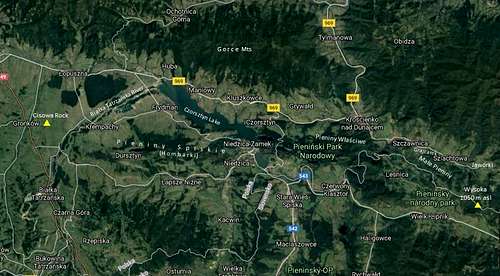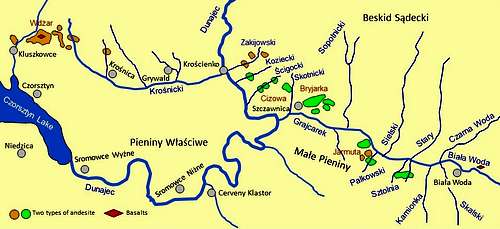-
 542 Hits
542 Hits
-
 71.06% Score
71.06% Score
-
 1 Votes
1 Votes
|
|
Album |
|---|---|
|
|
Informational |
Mountains - Water - Forests
The climate is distinctly changing. The likelihood of sudden heavy rainfall and prolonged periods of drought and heat is increasing. Man can expect buffering of weather and climate extremes from mountain ecosystems. In the mountains, forests play this role as the most important element of water retention. However, a forest ecosystem should be clearly distinguished from that of tree plantations. The latter is characterized by extremely poor biodiversity and poor water retention. Forests in the Pieniny Mts., from Cisowa Rock (685 m asl) near the Nowa Biała village in Podhale, to Wysoka Mt (1050 m asl) near the Jaworki village, are strongly fragmented by human agricultural activity located in depressions between numerous isolated rocks or mountain massifs. At present, this activity is disappearing in favor of tourist services. Spruce and spruce-fir forests dominate here. There are few natural patches of old trees. Younger plantations predominate. Among the natural forest units, there are also: oak-hornbeam forest with linden, hornbeam and beech - sparse fragments in the Dunajec gorge; Carpathian beech forest in the form of patches in the entire Pieniny, mainly in the Pieniny Właściwe; mountain sycamore forest in the valleys of streams and gullies; thermophilic orchid-beech forest on the warm slopes of the Pieniny Właściwe; swamp alder forest – not frequently next to the marshes and wet depressions; Carpathian alder forest in the Dunajec valley and its tributaries, and relict pine groves on the peaks and slopes of limestone rocks. All these forest communities form small patches and fragments with an admixture of plants from neighboring habitats. A large area is covered by meadows grazed by herds of sheep, partly mowed to preserve the valuable mountain plant communities. Juniperus communis, rose bushes and blackthorns enter warm slopes in places abandoned by man. In the Pieniny Właściwe, the upper parts are covered with forests, in the Małe Pieniny, meadows dominate, and in the Pieniny Spiskie, arable fields and meadows predominate, with the exception of the forested range on the southern side of the Czorsztyn Lake and single rocks stretching to the Białka Tatrzańska valley. Due to the geomorphology of the area, the streams flowing rapidly to the Dunajec, the main Pieniny river, cause flooding. The Czorsztyn Lake collects a significant amount of this water supplied by the Białka Tatrzańska and the source watercourses of the Dunajec. An example of large floods is the Grajcarek stream flowing on the northern side of the Małe Pieniny and collecting water from numerous tributaries on the northern slopes of the Małe Pieniny and the southern slopes of the Beskid Sądecki. High water in Grajcarek exceeds 3000 times the normal state. This situation requires man’s activity focused on water small retention in every possible form: from the expansion of swamp area, the turfing of eroded surfaces, the afforestation of abandoned meadows and pastures, to natural and artificial barriers that slow down or contain water runoff. During my trekking in this area, I did not notice such activities. The hydrological situation in the mountains determines the hydrology in the lowlands. The spring areas of watercourses in the mountains should be given special care. Increasing water retention there will reduce losses caused by floods and droughts also in the lowlands. The above activity may concern areas outside the national park and nature reserves.
External Links
Add External Links text here.




